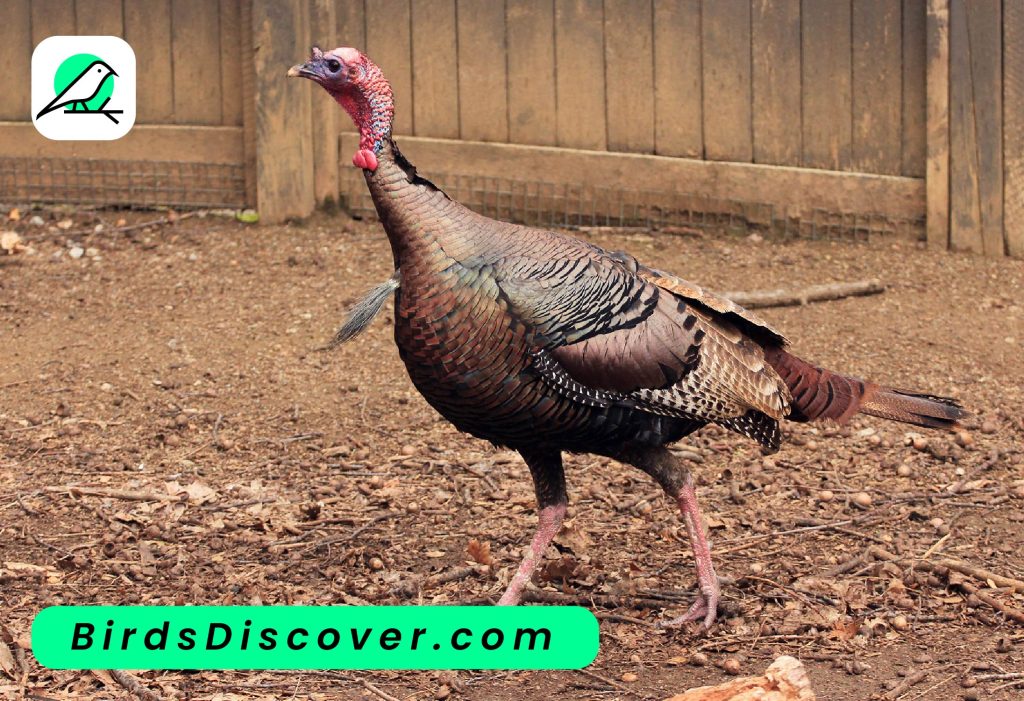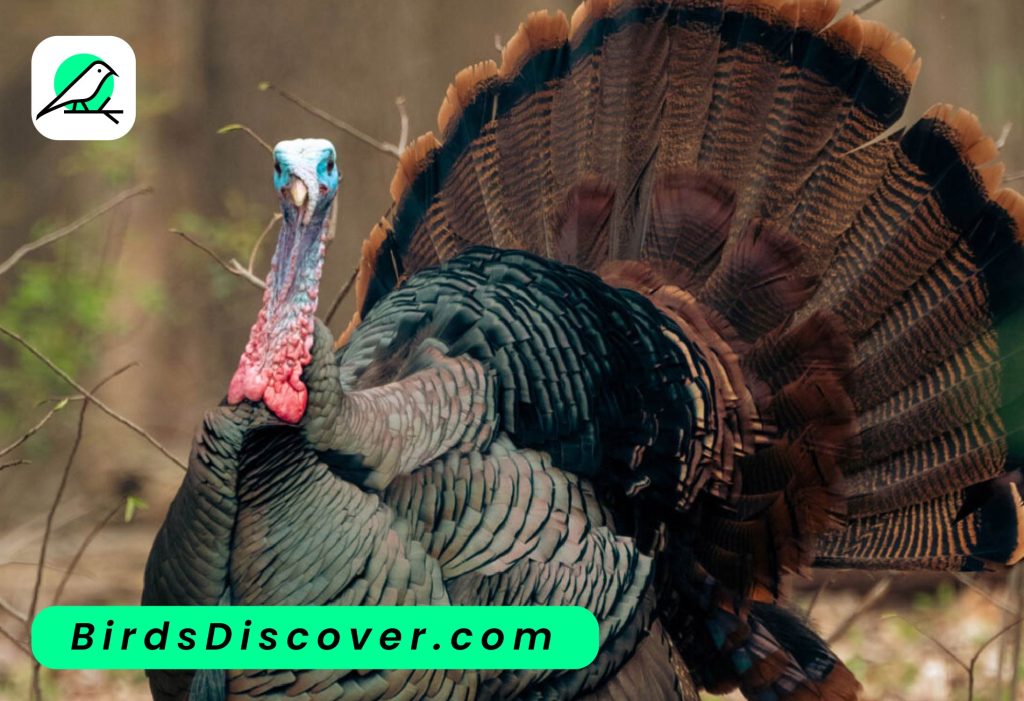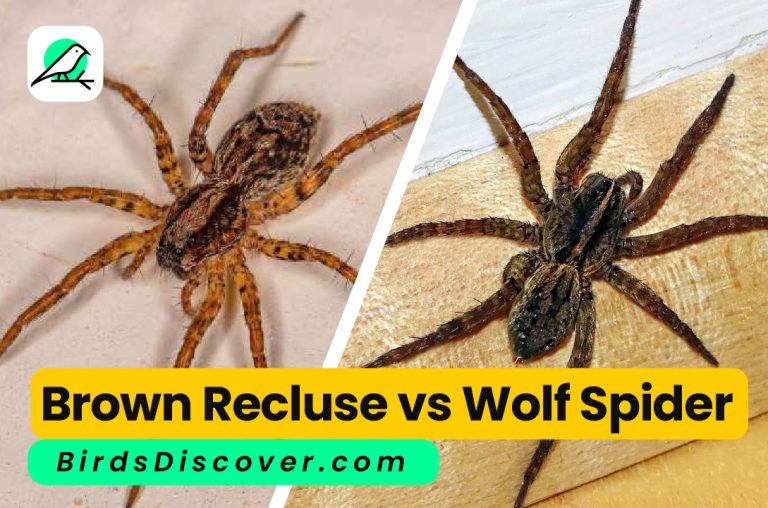Do Turkeys Eat Ticks? Exploring Their Feeding Habits

Do Turkeys Eat Ticks?
Yes, turkeys do eat ticks. Wild turkeys are opportunistic feeders and play a beneficial role in controlling tick populations. They forage on the ground, scratching and pecking through leaf litter and vegetation, consuming a wide variety of insects, including ticks. This behavior is particularly beneficial in areas where tick-borne diseases, such as Lyme disease, are a concern. By consuming ticks, turkeys help reduce the number of these pests in their environment, providing a natural form of pest control. Their diet is diverse and includes seeds, fruits, small reptiles, and amphibians, but their appetite for insects like ticks contributes positively to the ecosystem.
Turkeys Eat How Many Ticks in A Day?
Wild turkeys can consume a significant number of ticks each day. Studies suggest that a single turkey can eat up to 200 ticks in a single day. This makes them an effective natural control for tick populations, which is particularly beneficial in areas where tick-borne diseases, such as Lyme disease, are a concern. Turkeys forage extensively on the ground, pecking and scratching through leaf litter and vegetation where ticks are commonly found, contributing to their ability to help manage tick populations in their habitats.
Can Wild Turkeys manage the population of Ticks?
| Aspect | Description |
|---|---|
| Feeding Behavior | Wild turkeys are opportunistic feeders that consume a variety of insects, including ticks. |
| Foraging Method | They forage by scratching through leaf litter and vegetation, where ticks are commonly found. |
| Tick Consumption | A single turkey can eat up to 200 ticks in a day. |
| Ecosystem Role | Turkeys contribute to natural pest control by reducing tick populations in their habitats. |
| Impact on Tick-Borne Diseases | By consuming ticks, turkeys help lower the risk of tick-borne diseases, such as Lyme disease. |
| Complementary Factors | While effective, turkeys are part of a larger ecosystem that includes other predators and environmental controls. |
| Effectiveness | Turkeys alone may not eliminate ticks, but they significantly aid in managing tick populations. |
| Habitat | Found in forests, fields, and areas with dense underbrush, where ticks are also prevalent. |
| Beneficial Role | Turkeys play a beneficial role in tick control, contributing to the overall health of the ecosystem. |
Are Ticks are Dangerous to Humans?
Yes, ticks can be dangerous to humans as they are known vectors for several serious diseases. Among the most common tick-borne diseases is Lyme disease, caused by the bacterium Borrelia burgdorferi, which can lead to symptoms such as fever, headache, fatigue, and a characteristic skin rash called erythema migrans. If left untreated, Lyme disease can result in severe health issues including arthritis, neurological problems, and heart complications. Other diseases transmitted by ticks include Rocky Mountain spotted fever, anaplasmosis, ehrlichiosis, babesiosis, and tularemia, each presenting a range of symptoms from fever and muscle aches to life-threatening conditions like respiratory failure and organ damage. Additionally, ticks can cause alpha-gal syndrome, a severe allergic reaction to red meat. Immediate effects of tick bites can include itching, redness, and swelling, and bites can become infected if not properly treated. Given the significant health risks, preventing tick bites through protective clothing, insect repellents, regular tick checks, and proper tick removal is crucial in reducing the incidence of tick-borne illnesses.

Diseases Cased by Ticks
| Disease | Description |
|---|---|
| Lyme Disease | Caused by Borrelia burgdorferi, it leads to fever, headache, fatigue, and a bull’s-eye rash. If untreated, it can cause arthritis, neurological issues, and heart problems. |
| Rocky Mountain Spotted Fever | Caused by Rickettsia rickettsii, symptoms include fever, headache, rash, nausea, and vomiting. It can lead to organ failure and death if not treated promptly. |
| Anaplasmosis | Caused by Anaplasma phagocytophilum, it presents with fever, chills, muscle aches, and headache. Potential complications include respiratory failure and bleeding disorders. |
| Ehrlichiosis | Caused by Ehrlichia chaffeensis and E. ewingii, it causes fever, chills, muscle aches, and headache. Severe cases can lead to respiratory issues and organ failure. |
| Babesiosis | Caused by Babesia microti, symptoms include fever, chills, sweats, muscle aches, and fatigue. It can lead to hemolytic anemia and organ failure. |
| Tularemia | Caused by Francisella tularensis, symptoms include fever, skin ulcers, swollen lymph glands, sore throat, and respiratory issues. It can lead to sepsis, pneumonia, and death. |
| Alpha-Gal Syndrome | Caused by Lone Star tick (Amblyomma americanum) bite, leading to severe allergic reactions to red meat, such as hives, itching, and anaphylaxis. |
| Tick-Borne Relapsing Fever | Caused by Borrelia spp., it leads to recurrent episodes of fever, headache, muscle and joint aches. It can cause neurological problems and heart issues. |
| Powassan Virus | Caused by Powassan virus, symptoms include fever, headache, vomiting, weakness, confusion, and seizures. It can lead to encephalitis, meningitis, and death. |
| Heartland Virus | Caused by Heartland virus, it presents with fever, fatigue, decreased appetite, headache, nausea, and diarrhea. Severe cases may involve respiratory issues and organ failure. |
| Colorado Tick Fever | Caused by Colorado tick fever virus, symptoms include fever, chills, headache, muscle pain, and lethargy. Rarely, it can lead to encephalitis or hemorrhagic fever. |
Other Birds That Eat Ticks
Chickens
Chickens (Gallus gallus domesticus) are domesticated birds raised globally for meat and eggs. Originating from Southeast Asia, they are omnivorous and adaptable, thriving in various housing systems. Typically kept for 1-2 years in commercial settings, chickens are essential in agriculture, providing significant food resources and economic value.
Ducks
Ducks are versatile waterfowl found in both wild and domesticated forms across the globe. These birds, belonging to the family Anatidae, are commonly recognized for their distinctive quacking sounds, webbed feet, and varied plumage. Ducks inhabit a range of environments, from freshwater lakes and rivers to coastal marshes and even urban ponds. Domesticated ducks are often raised for their meat, eggs, and feathers, with breeds such as the Pekin and Khaki Campbell being popular in agriculture. Ducks are omnivorous, feeding on aquatic plants, insects, and small fish. Their adaptability and social nature, including their ability to form flocks and engage in migratory behavior, make them both ecologically significant and economically valuable.
Guineafowl
Guineafowl are distinctive, ground-dwelling birds native to Africa, belonging to the family Numididae. Known for their speckled plumage, which provides excellent camouflage, guineafowl are often raised for their meat, eggs, and as ornamental birds. They have a unique, loud call and are social animals that form flocks in the wild. Guineafowl are omnivorous, feeding on insects, seeds, and small plants. They are valued in agriculture for their pest-control abilities, as they actively forage for insects and ticks. Adaptable to various habitats, including savannas and forests, guineafowl contribute to local ecosystems and agricultural practices with their foraging behavior and distinctive appearance.
Cattle Egret:
The Cattle Egret (Bubulcus ibis) is a small, white heron found in a variety of habitats across the globe, from grasslands and wetlands to agricultural fields. Known for their distinctive relationship with large herbivores, such as cattle, these egrets often follow them to feed on insects and parasites stirred up by the grazing animals. Their plumage is predominantly white, with a yellowish hue during the breeding season and orange-buff coloration on the back and neck. Cattle Egrets are highly adaptable and can thrive in both tropical and temperate climates. They are social birds, often seen in groups, and play a beneficial role in controlling insect populations, making them valuable to both natural ecosystems and agriculture.
Partridge
Species: Partridges are medium-sized birds belonging to the family Phasianidae, commonly found in open fields and grasslands.
Habitat: They inhabit a variety of environments, including agricultural areas and natural grasslands, and are native to Europe, Asia, and Africa.
Appearance: Partridges have a rounded body and short tail, with plumage that provides camouflage in their habitat, aiding in predator evasion.
Diet: Their diet primarily consists of seeds, insects, and plants, contributing to their role in local ecosystems.
Behavior: Partridges are ground-dwelling and strong runners, nesting on the ground and sometimes hunted for sport due to their gamey flavor.
Roadrunner:
The roadrunner (Geococcyx spp.) is a distinctive bird native to the deserts and scrublands of the southwestern United States and Mexico. Known for its sleek, streamlined body and long legs, the roadrunner is an agile and fast runner, capable of reaching speeds up to 20 miles per hour. It feeds on a diet of insects, small animals, and reptiles, including rattlesnakes. With its characteristic “coo-coo” call and striking plumage featuring a mix of brown, black, and iridescent blue feathers, the roadrunner is both an intriguing and iconic species of the desert landscape.
Woodpeckers
Woodpeckers are striking birds known for their distinctive behavior of pecking at tree trunks with their strong beaks. Belonging to the family Picidae, woodpeckers are found in a range of habitats, from forests and woodlands to urban areas. They have a unique anatomy adapted for drumming, including a reinforced skull, strong neck muscles, and a specialized tongue that extends to extract insects from trees. Woodpeckers play a vital role in ecosystems by controlling insect populations and creating nesting sites for other species through their excavations. They are recognized by their vivid plumage, which varies among species, and their rhythmic drumming, which serves both to communicate and to mark territory.
Oxpecker
Species: Oxpecker, belonging to the genus Buphagus.
Habitat: Native to sub-Saharan Africa, commonly found in savannas, grasslands, and open woodlands.
Diet: Feeds on parasites, such as ticks and insects, found on large mammals.
Behavior: Cleans parasites from large mammals like buffalo, giraffes, and rhinoceroses by feeding on them.
Appearance: Small birds with distinctive red eyes, yellow underparts, and dark wings and back.
Calls: Recognized for their loud, high-pitched calls used for communication and signaling danger.
Quail Eat Ticks?
| Topic | Details |
|---|---|
| Do Quail Eat Ticks? | Yes, quail do eat ticks. They are omnivorous and consume a variety of insects, including ticks. |
| Diet | Quail’s diet includes seeds, plants, and insects. Ticks are a part of their insectivorous diet. |
| Benefits | Eating ticks helps control tick populations and reduces the risk of tick-borne diseases in their habitat. |
| Habitat | Quail are found in grasslands, fields, and woodlands, where ticks are commonly present. |
| Feeding Behavior | Quail forage on the ground, scratching and pecking through vegetation to find ticks and other insects. |
| Ecological Impact | By consuming ticks, quail contribute to the natural control of tick populations, benefiting the ecosystem. |
Where Do Ticks Live
Ticks are versatile parasites that inhabit a variety of environments. Here’s a summary of where ticks live:
- Woodlands: Ticks are commonly found in wooded areas with dense vegetation, where they can easily attach to passing animals.
- Grasslands: They thrive in tall grasses and shrubs, which provide ample hosts for feeding.
- Meadows and Fields: Ticks often inhabit open fields and meadows, especially if there are patches of tall grass and bushes.
- Urban Areas: In residential areas, ticks can be found in yards, gardens, and parks, particularly in overgrown or unkempt areas.
- Wetlands: Ticks may also live in marshy or swampy areas, where vegetation provides habitat and potential hosts.
- Animal Hosts: Ticks frequently reside on their hosts (such as mammals, birds, and reptiles) during feeding periods.
Ticks are not bothered by domestic turkeys sufficiently
Domestic turkeys are not highly effective in managing tick populations. Although turkeys do consume a variety of insects, including some ticks, they do not significantly impact tick numbers. Their feeding behavior is not specialized for targeting ticks, and their diet includes many other insects. Additionally, ticks have complex life cycles and can persist in the environment for extended periods, making it challenging for turkeys alone to control their populations. Ticks can easily find other hosts and thrive in habitats with dense vegetation and humidity, reducing the overall impact of domestic turkeys on tick control. Thus, while turkeys may contribute to reducing tick numbers to some extent, they are not a sufficient solution for tick management.

Food Preferences of Domestic Turkeys
| Domestic Turkeys | Details |
|---|---|
| Diet | Includes commercial feed, grains, vegetables, fruits, and insects. Provides balanced nutrition. |
| Habitat | Typically kept in agricultural settings, including farms with access to open spaces and shelter. |
| Behavior | Omnivorous and foraging; known for scratching the ground and pecking at various foods. |
| Uses | Raised for meat (turkey) and eggs; also valued for their role in pest control and as ornamental birds. |
How many ticks do turkeys eat a year?
The number of ticks turkeys consume in a year can vary widely based on several factors, including their habitat, tick density, and the availability of other food sources. While specific quantitative data on the exact number of ticks eaten by turkeys annually is limited, it is known that turkeys do consume ticks as part of their diet, especially when foraging in areas with high tick populations.
Turkeys can help reduce tick populations to some extent, but they are not typically relied upon as a primary means of tick control. The impact of their tick consumption is often modest compared to other measures or animals specialized in tick control.
Do turkeys eat mosquitoes?
Turkeys may occasionally eat mosquitoes, but they are not their primary food source. Their diet mainly consists of insects, seeds, and plants. While turkeys might consume some mosquitoes while foraging, they are more effective at controlling larger insects like ticks and beetles.
Do wild turkeys carry diseases?
Yes, wild turkeys can carry diseases, including avian pox and histoplasmosis. They may also harbor parasites like ticks, which can carry diseases transmissible to other animals and humans.
Do chickens eat ticks?
Yes, chickens do eat ticks as part of their diet, helping to reduce tick populations. Their foraging behavior includes scratching the ground to find ticks and other insects.
Do turkeys eat fleas?
Yes, turkeys can eat fleas along with other insects while foraging. However, fleas are not a primary part of their diet, and their impact on flea populations is generally limited.
Do turkeys eat bugs?
Yes, turkeys eat a variety of bugs, including beetles, worms, ants, and other insects. Their diet consists of both plant material and insects, helping them obtain essential nutrients and protein.
Do turkeys eat ants?
Yes, turkeys do eat ants. They include ants as part of their diet when foraging, helping to provide protein and other nutrients.
Summary
Turkeys are omnivorous birds that eat a variety of foods, including insects like ants, beetles, and worms. They forage for these bugs along with seeds, grains, fruits, and vegetables, which contribute to their balanced diet. While turkeys can help reduce insect populations, including ticks and fleas, their impact on these pests is generally limited compared to other control methods.
FAQs
Can turkeys spread ticks?
Yes, turkeys can carry ticks on their feathers and skin, which may lead to the spread of ticks to other areas. While they do eat some ticks, they can also serve as hosts for these parasites. Therefore, turkeys can contribute to the dispersal of ticks in their environment.
What animal consumes the most ticks?
The animal that consumes the most ticks is the American opossum. Opossums are highly effective tick predators, as they can eat thousands of ticks each season. Their grooming behavior and high tolerance for tick-borne pathogens help reduce tick populations significantly. Additionally, other animals like guinea fowl and certain bird species also play a crucial role in controlling ticks.
How many ticks do turkeys eat a day?
Turkeys can consume a varying number of ticks daily, depending on their environment and tick density. On average, they might eat several dozen ticks in a day while foraging. However, specific numbers can vary widely based on factors like habitat and availability of other food sources.
What naturally eliminates ticks?
Ticks are naturally eliminated by several factors. Wildlife like opossums and birds consume large numbers of ticks, while soil-dwelling nematodes prey on them. Additionally, environmental conditions such as sunlight, high temperatures, and dry weather can reduce tick populations by affecting their survival and reproduction.
What else do turkeys eat besides ticks?
Besides ticks, turkeys eat a diverse range of foods including seeds and grains like corn and wheat, vegetables such as lettuce and carrots, fruits like apples and berries, and various insects such as beetles and worms. They also forage on grasses, clover, and other plants, which provide essential nutrients and dietary fiber.
How effective are turkeys in controlling tick populations?
Turkeys can help reduce tick populations by consuming some ticks, but they are not highly effective as a primary control method. Their impact is limited compared to other specialized tick predators and control measures.
Can turkeys help reduce tick-borne diseases?
Turkeys can help reduce tick populations, which may indirectly lower the risk of tick-borne diseases. However, their effectiveness in significantly controlling tick-borne diseases is limited compared to other more targeted methods.
How can I attract turkeys to my property for tick control?
To attract turkeys for tick control, provide a mix of grains, seeds, and fruits, and create a suitable habitat with open areas, tall grasses, and water sources. Minimize disturbances and offer shelter to make your property more inviting.




